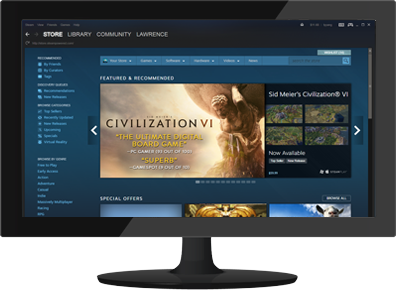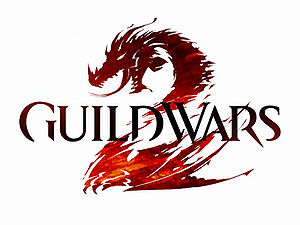
Computer game technology is a rapidly-increasing field. In terms of both hardware and software, companies are constantly striving to push the envelope and increase performance. As the intricacy of individual games increases, however, it becomes important to select a computer gaming system that will best fit your particular needs. Unfortunately, there is no shortage of gaming PCs available on the market. How, then, do you select the best gaming system? By answering several questions about your gaming and financial needs, you can determine which direction to turn in terms of a proper gaming system.
What Kinds of Games do you Play?
The specific types of games that you tend to play will help decide which hardware configurations will best meet your needs. All games are not created equal, and depending on the genre developers will devote more of their energy to different aspects of the title. Strategy and simulation games, for example, tend to be less graphically-intensive than other types of games and thus can be run on a less powerful gaming system. As a point of reference, the specifications for Civilization IV, a lush and detailed strategy game, are as follows:
-1.8GHz Intel or AMD processor
-512MB RAM
-128MB video card
Compared to many of the newer gaming computers on the market today, the demands for running Civilization IV are not all that high. As with many strategy and simulation games, a greater weight is placed on AI and game calculations rather than graphics, and raw hardware power becomes less important to run the title effectively.
Conversely, first-person shooters (FPS) and action titles tend to rely more heavily on graphics and physics to create the proper ambiance and environment. As such, the system requirements for these types of games are usually significantly higher than other genres. Titles like Half-Life 2 and Quake 4 bombard the player with graphically intensive scenes, and the physics of the game are precisely calculated to create the most realistic scenarios possible. In contrast to the specifications listed above, the recommended system configuration for F.E.A.R., one of the more advanced FPS titles in terms of graphics prowess, are as follows:
-3.0 Pentium 4 or equivalent processor
-1GB RAM
-256MB video card
Although F.E.A.R. and Civilization IV released at roughly the same time last year, the recommended system requirements for the former are nearly double those of the latter. This is often the case with FPS titles; because developers largely intend these games to be "showcase" pieces of a particular technology or graphics engine, a more powerful gaming computer is usually required to run them in their full graphical glory. The graphic rendering takes enough resources, but when you figure in the requirements for precise real-time physics calculations, these get bumped up even further. As you can see, the types of computer games that you play invariably affect the hardware that you should purchase.
Must you have the Best Graphics?
Genre alone is not the sole deciding factor in determining which gaming PC to purchase, however. Many titles, including such showcase pieces as Half-Life 2 and Doom 3, provide the player with the option of scaling back the graphical effects in order to run the game smoothly on a less-powerful system. While FPS and other games often require a behemoth of a system in order to run with all graphical effects turned on, they will generally run adequately on older rigs. If you can live without such taxing effects as particle shading and frame rates in the hundreds, chances are that you can spend less on a gaming computer and still be able to play the latest games.
What's more, in many cases game developers and players will discover ways to make a game run more smoothly and stably shortly after it releases. It is generally expected that, in the rush to hit the marketplace, many games are not truly "finished"; that is to say, the code behind them could stand to be optimized slightly more. Therefore, developers and publishers will usually releases patches or updates in order to fix certain technical problems. In the case of F.E.A.R., many players reported shortly after its release that the frame rate would often drop down to unplayable levels mid-game, chugging along even on powerful gaming systems. Once the game was patched, however, this shortcoming was largely rectified. Similarly, avid players or members of a gaming community will often find ways to improve a game's performance on their own through hacks or tweaks. When this happens, their findings are usually released online in short order, and a game that might have taxed your gaming computer beyond its capabilities may suddenly become playable. Again, it's not always necessary to have the absolute best hardware in order to play the latest games.
How Much do you Plan on Spending?
Naturally, all of this technology comes at a price. As the adage goes, you have to pay in order to play. Everybody aspires to one day own an ultimate gaming computer; the specifications are mind-boggling, and there is no shortage of companies offering monster gaming rigs. However, the cost of owning one of these machines is often prohibitive. Keep in mind that the newest and most powerful video cards tend to hit the market at the $500 price point. Additionally, the most powerful processors can be priced at $1000 or more. When you design a system around these top-level components--a system that can take the latest game releases, chew them up, and spit them out--you can expect the cost of it to soar. It's not unheard of to see dedicated gaming PCs priced at $4000 or more for the tower only.
Obviously, the first two questions influence the third quite a bit. If you don't play many graphically-intensive games, or if you are willing to live with slightly degraded in-game graphics, it is simply not necessary to spend that kind of money on a gaming system. There are plenty of computer companies that have in their lineups midrange setups that are perfectly capable of playing the majority of games on the market today--and at a significantly reduced price. Don't despair if you can't afford the latest and most powerful computer technology; while economic means may be the most influential of all deciding factors, it won't necessarily prohibit you from playing the games that you want.
Jordan Hall, the editor of [http://www.best-gaming-computers.com] is an avid computer gamer and technology enthusiast who enjoys providing consumers with advice concerning gaming computers and gaming laptops.
Article Source: http://EzineArticles.com/203544


























































